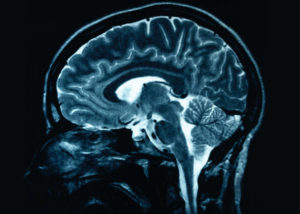There are many factors that contribute to sleep deprivation for example bathroom trips, sleep schedules, temperature, noise, and technological devices. However, there are biological processes that impact sleep as well. Specifically, there are three biological processes that are controlled through involvement of the brainstem, and two divisions of the hypothalamus, which are the anterior hypothalamus and the suprachiasmatic nuclei (SCN).
 First, the brainstem plays a vital role in REM (rapid eye movement) and NREM (non- rapid eye movement). “The brainstem controls events of REM sleep” Pinel, 2010, pg. 364). REM occurs under the eyelids and was discovered in the 1950’s (Pinel, 2010, pg. 343). Reinoso-Suárez, de Andrés, Rodrigo-Angulo and Garzón (2001) found, “The ventral part of the oral pontine reticular nucleus (vRPO) is a demonstrated site of the brainstem REM sleep-wake cycle, as well as with other brain components responsible for the production of different occurrences related to REM sleep.” Non-REM sleep (NREM) is referred to as slow wave sleep (de Andrés, Garzón, & Reinoso-Suárez, 2011). NREM is vital for standard physical and intellectual functioning and behavior (de Andrés, Garzón, & Reinoso-Suárez, 2011). Further, Villablanca (2004) stated, “Waking can occur independently in both the forebrain and brainstem, but true NREM and REM sleep producing mechanisms exist entirely in the forebrain and brainstem.”
First, the brainstem plays a vital role in REM (rapid eye movement) and NREM (non- rapid eye movement). “The brainstem controls events of REM sleep” Pinel, 2010, pg. 364). REM occurs under the eyelids and was discovered in the 1950’s (Pinel, 2010, pg. 343). Reinoso-Suárez, de Andrés, Rodrigo-Angulo and Garzón (2001) found, “The ventral part of the oral pontine reticular nucleus (vRPO) is a demonstrated site of the brainstem REM sleep-wake cycle, as well as with other brain components responsible for the production of different occurrences related to REM sleep.” Non-REM sleep (NREM) is referred to as slow wave sleep (de Andrés, Garzón, & Reinoso-Suárez, 2011). NREM is vital for standard physical and intellectual functioning and behavior (de Andrés, Garzón, & Reinoso-Suárez, 2011). Further, Villablanca (2004) stated, “Waking can occur independently in both the forebrain and brainstem, but true NREM and REM sleep producing mechanisms exist entirely in the forebrain and brainstem.”
Secondly, the hypothalamus plays a key role in sleep. Specifically, the anterior hypothalamus and adjacent basal forebrain are thought to promote sleep (Pinel, 2010, pg. 355). The anterior hypothalamus is in the basal-forebrain area. “Activation and deactivation of certain cells in the hypothalamus shuts off the arousal system during sleep. Other hypothalamic neurons stabilize the activation and deactivation, however if the switching of cells/neurons is absent this results in inappropriate sleep occurrences, such as disorders like narcolepsy” (Saper, Scammell & Lu, 2005).
From literature the suprachiasmatic nuclei (SCN) in the hypothalamus plays a role in sleep also. “The suprachiasmatic nuclei is situated bilaterally in the hypothalamus, just above the optic chiasm” (Hobson & Pace-Schott, 2002). The SCN is composed of two major subdivisions, the core and the shell. “The core region of the SCN obtains information about the daily light cycle through the retinohypothalamic tract (RHT)” (Takahashi, Hee-Kyung, Ko & McDearmon, 2008). “Neurons in the SCN core correspond with the rhythmic SCN shell. Cells in the rhythmic SCN shell comprise molecular clocks driven by an autoregulatory transcription translation loop” (Antle & Silver, 2005). The SCN controls circadian rhythms (also known as the circadian clock). Interestingly, “Circadian rhythms govern a variety of biological processes in living systems, stretching from bacteria to humans” (Takahashi, Hee-Kyung, Ko & McDearmon, 2008). The suprachiasmatic nucleus of the mammalian hypothalamus contains a circadian clock for timing of diverse neuronal, endocrine, and behavioral rhythms, such as the cycle of sleep and wakefulness (Sakai, 2014). The timing mechanisms of the SCN are dependent on the firing patterns of SCN neurons. During the night SCN neurons tend to be inactive, start to fire at dawn, and fire at a leisurely stable pace all day (Pinel, 2010, pg. 354). Importantly, it seems as though genetics also influences the SCN. Hobson and Pace-Schott (2002) stated, “The molecular circadian clock is genetically controlled and synchronously expressed holistically and individually by 20,000 cells in the mammalian hypothalamus.”
While it is important to be mindful of the many factors in the sleep environment that may impact how much sleep we get, and how rested we feel, there are also biological processes located in our brain, as well as genetics to some degree which impact sleep. It seems our brain has a major role in REM sleep, NREM sleep, and our natural Circadian rhythm as well.
References
Antle, M. C., & Silver, R. (2005). Orchestrating time: arrangements of the brain circadian clock. Trends in neurosciences, 28(3), 145-151.
de Andrés, I., Garzón, M., & Reinoso-Suárez, F. (2011). Functional anatomy of non-REM sleep. Frontiers in Neurology, 2, 70. doi:10.3389/fneur.2011.00070
Hobson, J. A., & Pace-Schott, E. F. (2002). The Neurobiology of Sleep: Genetics, cellular physiology and subcortical networks. Nature Reviews Neuroscience, 3, 591.
Pinel, John P.J. (2010). Biopsychology, Ninth Edition. Pearson Education, Inc.
Reinoso-Suárez, F., de Andrés, I., Rodrigo-Angulo, M. L., & Garzón, M. (2001). Brain structures and mechanisms involved in the generation of REM sleep. Sleep medicine reviews, 5, 63-77.
Sakai, K. (2014). Single unit activity of the suprachiasmatic nucleus and surrounding neurons during the wake–sleep cycle in mice. Neuroscience, 260, 249-264.
Saper, C. B., Scammell, T. E., & Lu, J. (2005). Hypothalamic regulation of sleep and circadian rhythms. Nature, 437, 1257-1263.
Takahashi, J. S., Hee-Kyung, H., Ko, C. H., & McDearmon, E. L. (2008). The genetics of mammalian circadian order and disorder: implications for physiology and disease. Nature Reviews Genetics, 9(10), 764-775. doi:10.1038/nrg2430
Villablanca, J. R. (2004). Counterpointing the functional role of the forebrain and of the brainstem in the control of the sleep–waking system. Journal Of Sleep Research, 13, 179-208. doi:10.1111/j.1365-2869.2004.00412.x
Katy Roth, M.A., CRC
WKPIC Doctoral Intern
